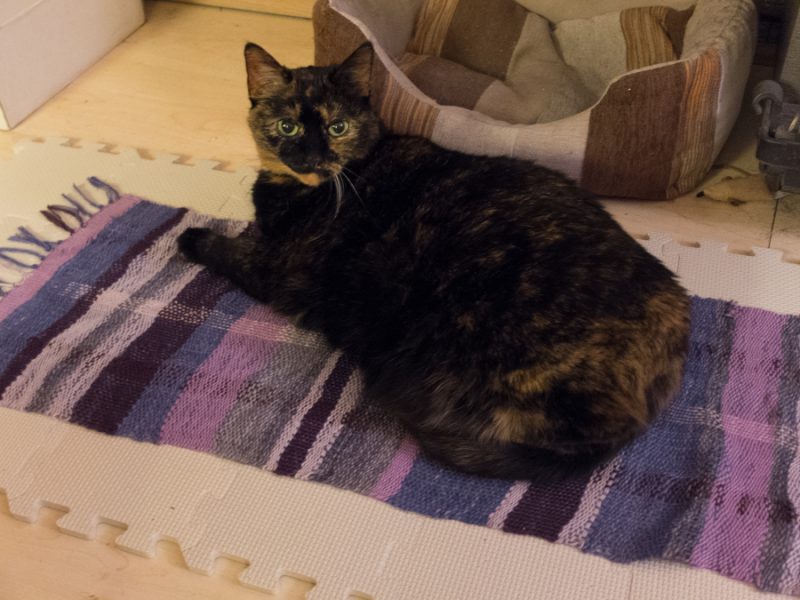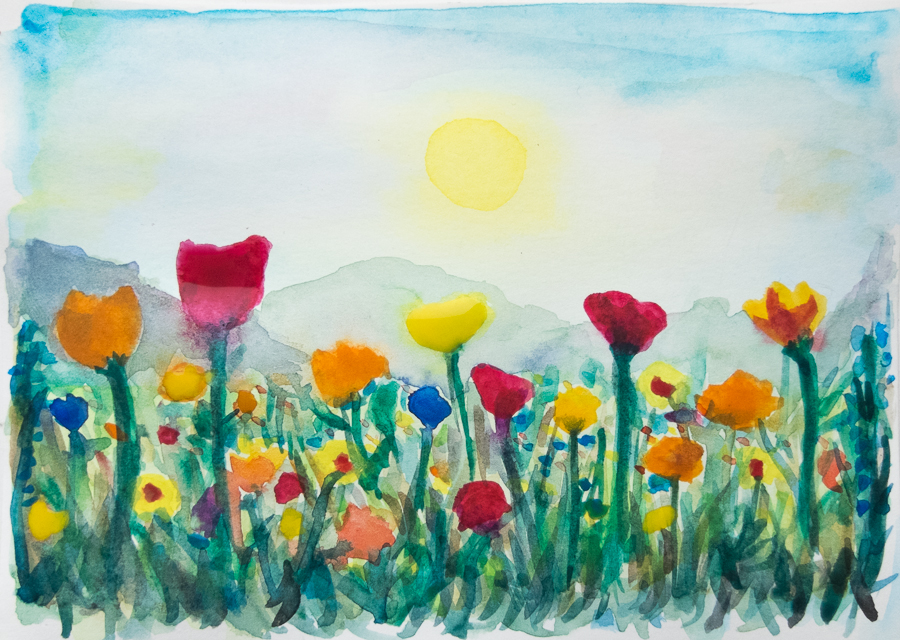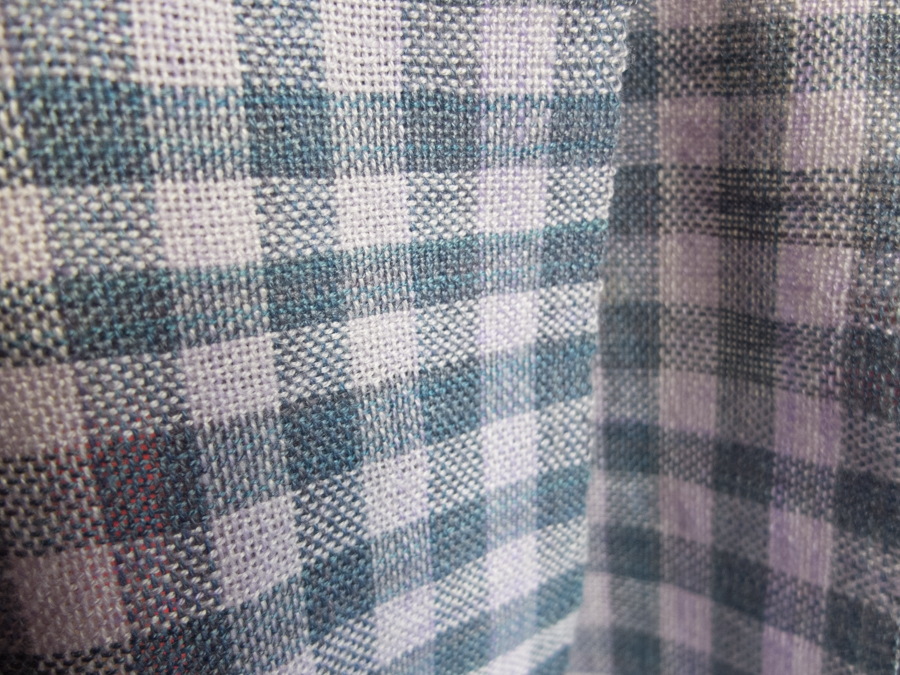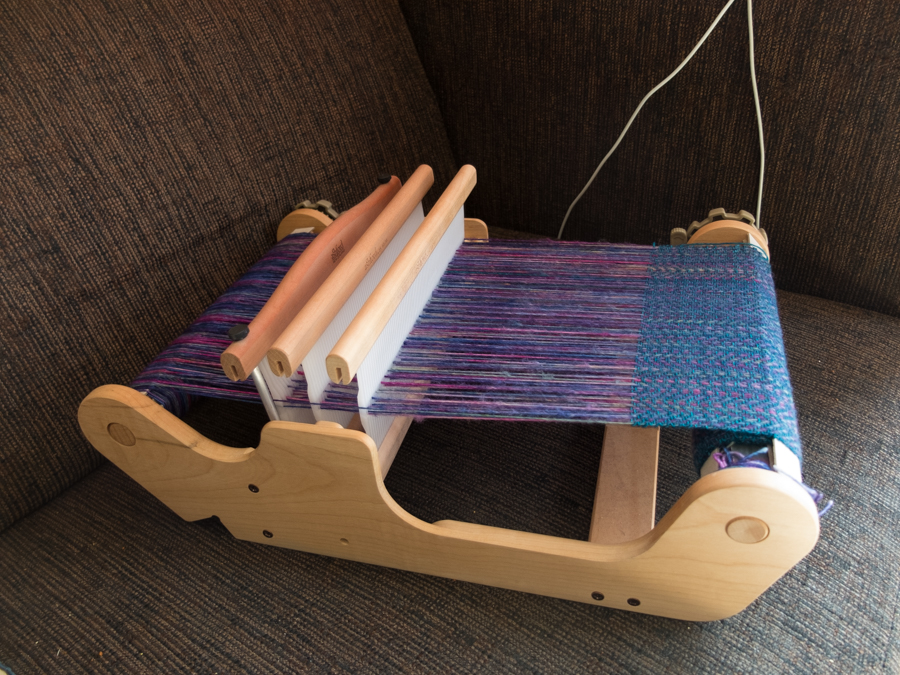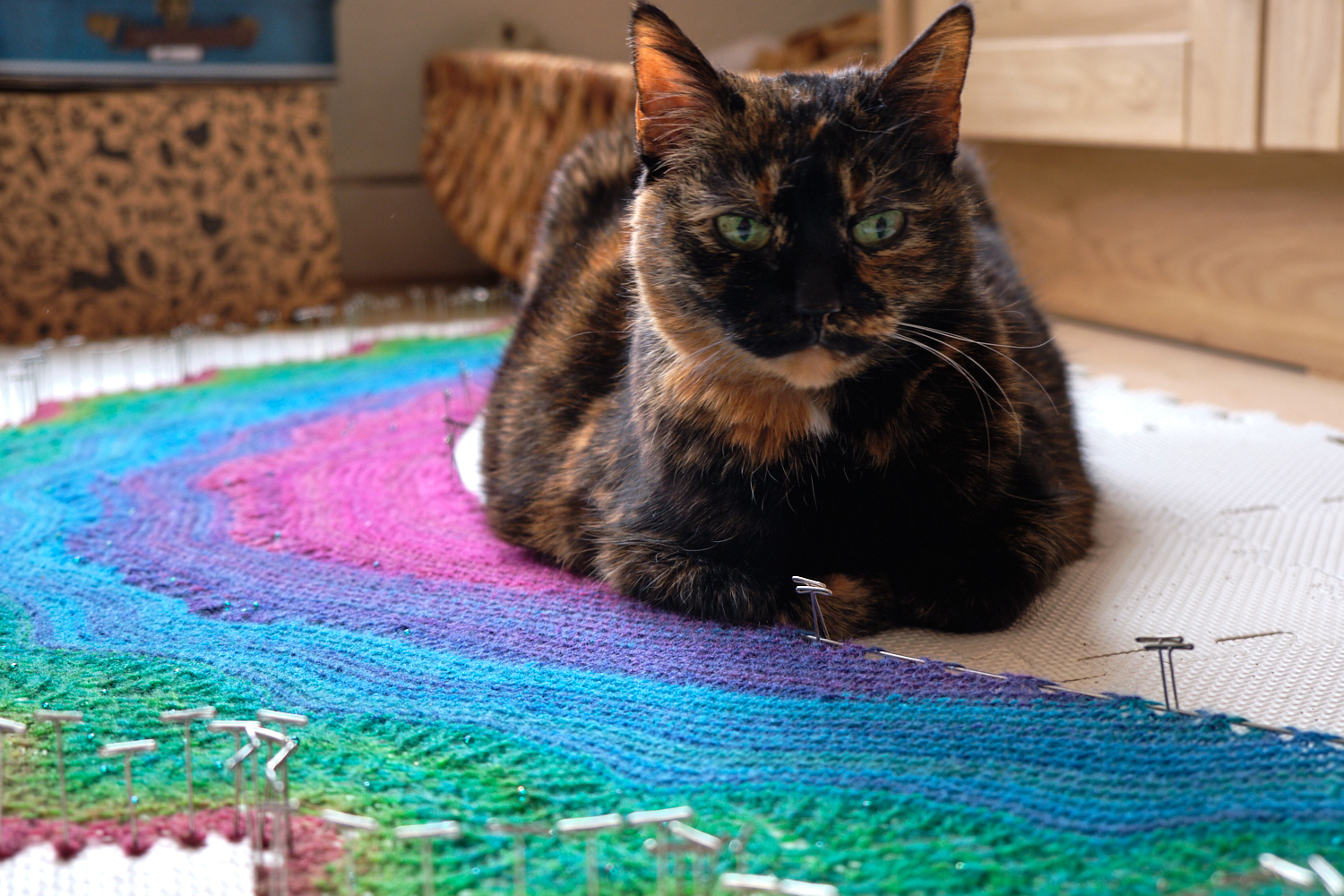Yes, I took the plunge! My friend Gloryfied let me borrow her simple rigid heddle loom to try and weave on it. It’s a no-name loom that has been circulating around crafters who want to try to weave. It looked a bit daunting, but I had already read Inventive Weaving on a Little Loom so I knew what to expect (more or less). Still didn’t prevent me from making all kinds of rookie mistakes!
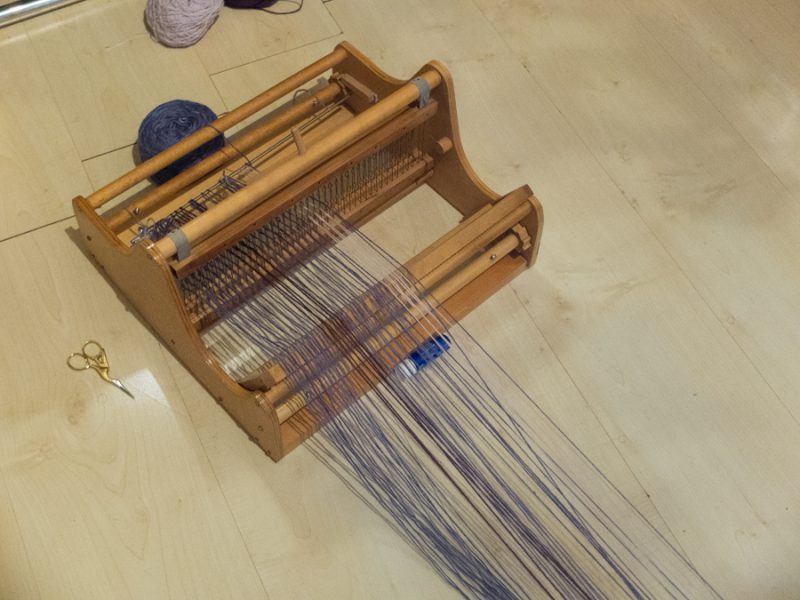
Step one: make a warp. The warp is the bunch of threads that lie lengthwise in your weaving, and you weave your weft through the warp. It’s quite a lot of work to make a warp. I didn’t have clever tools like a warping peg or board, so my warp was a little bit wonky. Not too bad, though. I used some different coloured yarns to (hopefully) create interesting patterns later on. Warp speed ahead!
Some pieces from the loom were missing, I think. I was missing at least one metal rod. I used the one that I had for the back of the warp, and I cut a cardboard piece for the front. Not a great idea, because a piece of cardboard does not stay straight when under tension… Nevermind, time to start weaving!
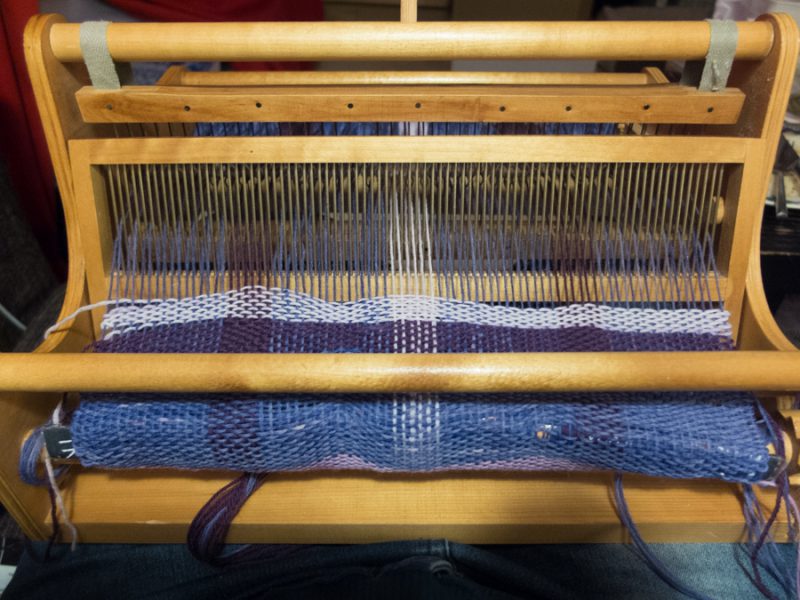
Yep, that’s what happens if you use cardboard… or is something else the matter? At this point I presumed that it was the cardboard. The warp was tied to it, and the places where the knots were moved inward and had some bulk from the knots. It would probably look fine once the fabric was wound off. At least, I tried to convince myself of that.
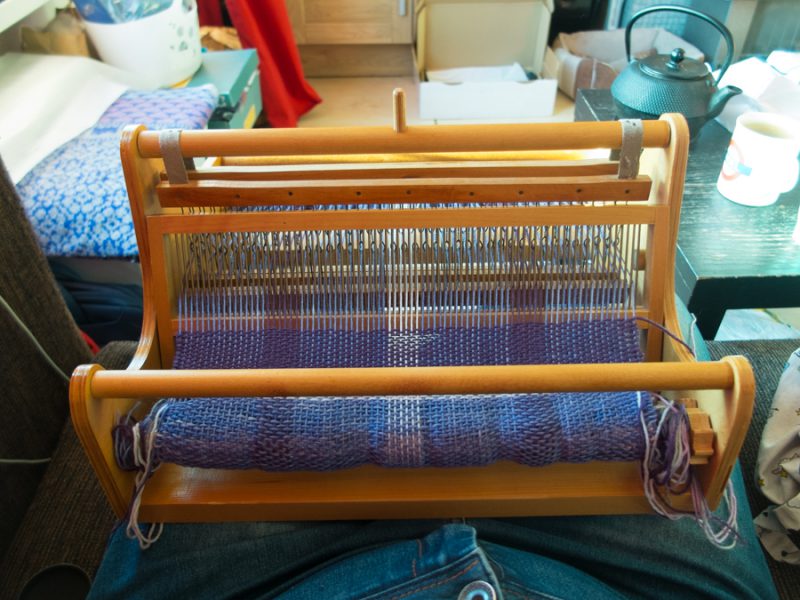
After a while the weaving became straight on its own. When winding it onto the cloth beam though it became bobbly again. I suddenly realized that the problem might be something else: the warp consisted of different yarns with different fibre contents! The lilac yarn was a linen/merino mix, and the light and dark purple yarns were wool. The linen merino just might be less stretchy than the other warp threads. So to keep the tension on the loom, the woolen threads were pulled out more and they might spring back after the tension was taken off. Oh, I was also supposed to warp the loom over the top front and back beams, I guess. But by now I was so far along that I decided to just continue weaving and wait and see what would happen. It would be educational at least.
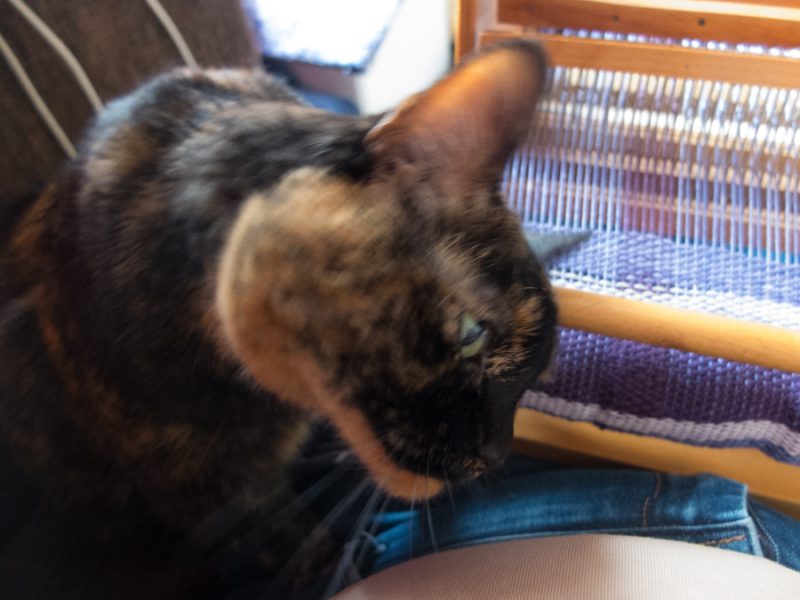
Freya agreed with my weaving and head bonked the loom to help. So thoughtful!
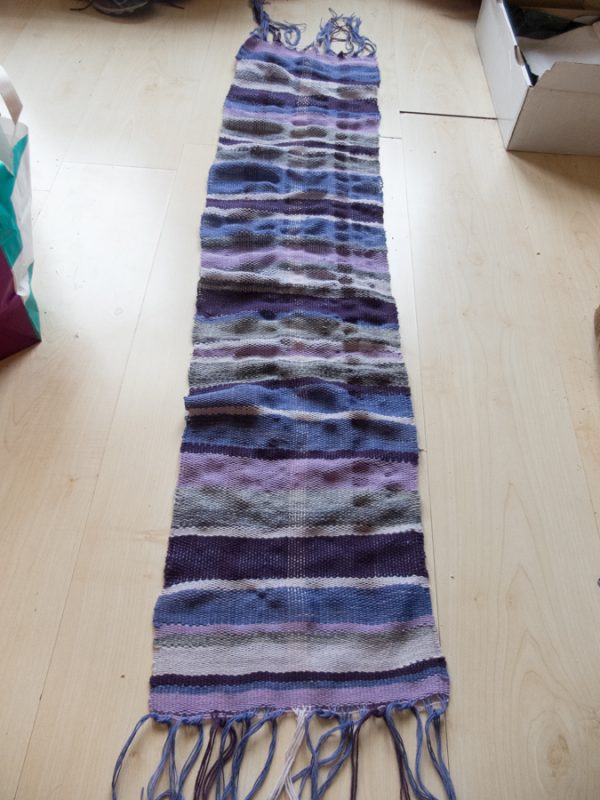
I took the scarf off the loom and what I feared came true: the different warp yarns had different tensions and were now out of balance. You can see it especially well on the right-hand side. That line of little dimples is there because of the dark purple yarn being overstretched compared to the lilac. Now that the scarf is not under tension anymore, the yarn bounces back, and there is too much fabric in those places. Now what?
I decided to try and move the weft a bit, creating space in some places and making other spots tighter. However, this was a lot of work, and it did not look that great afterwards. My lines were not nice and straight anymore. I could probably improve it a bit more, but I didn’t feel like it. I just gave the scarf a bath and laid it in front of the heating.
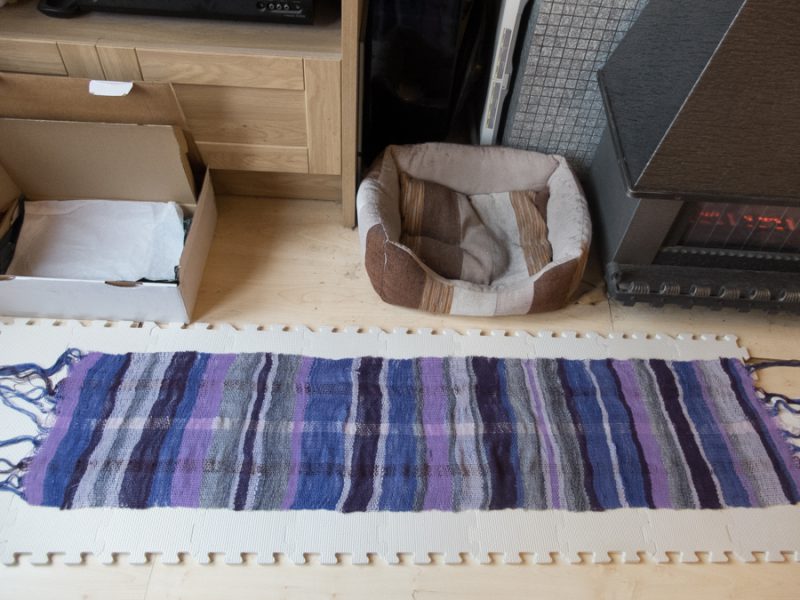
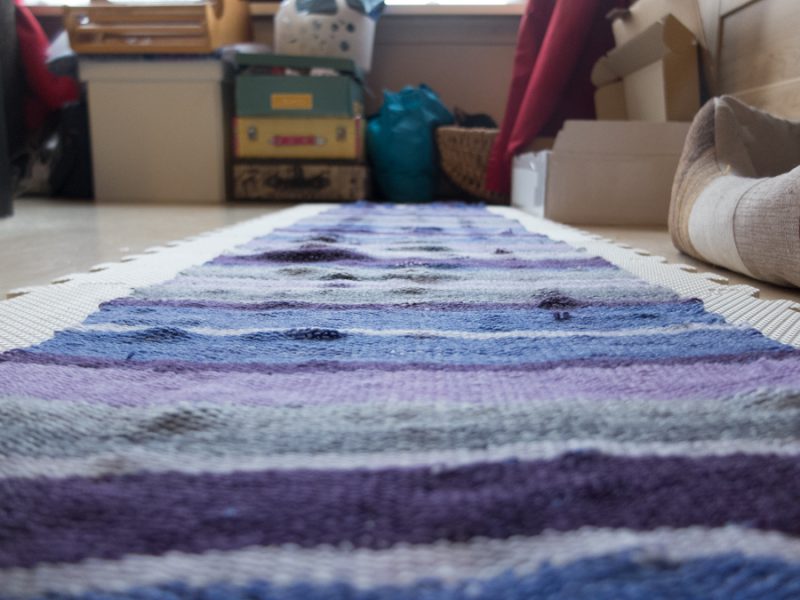
There are still some bobbly spots, but not as big or as many as before. I hope my next project will be better!
